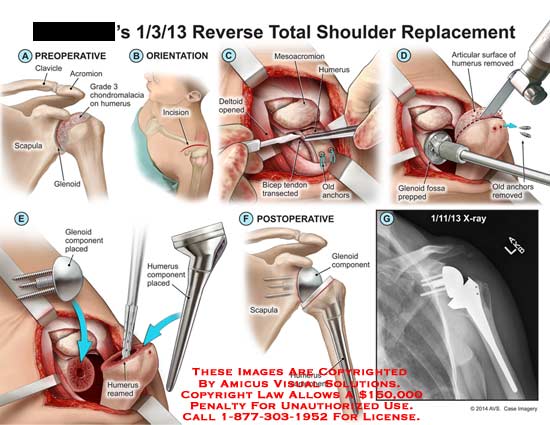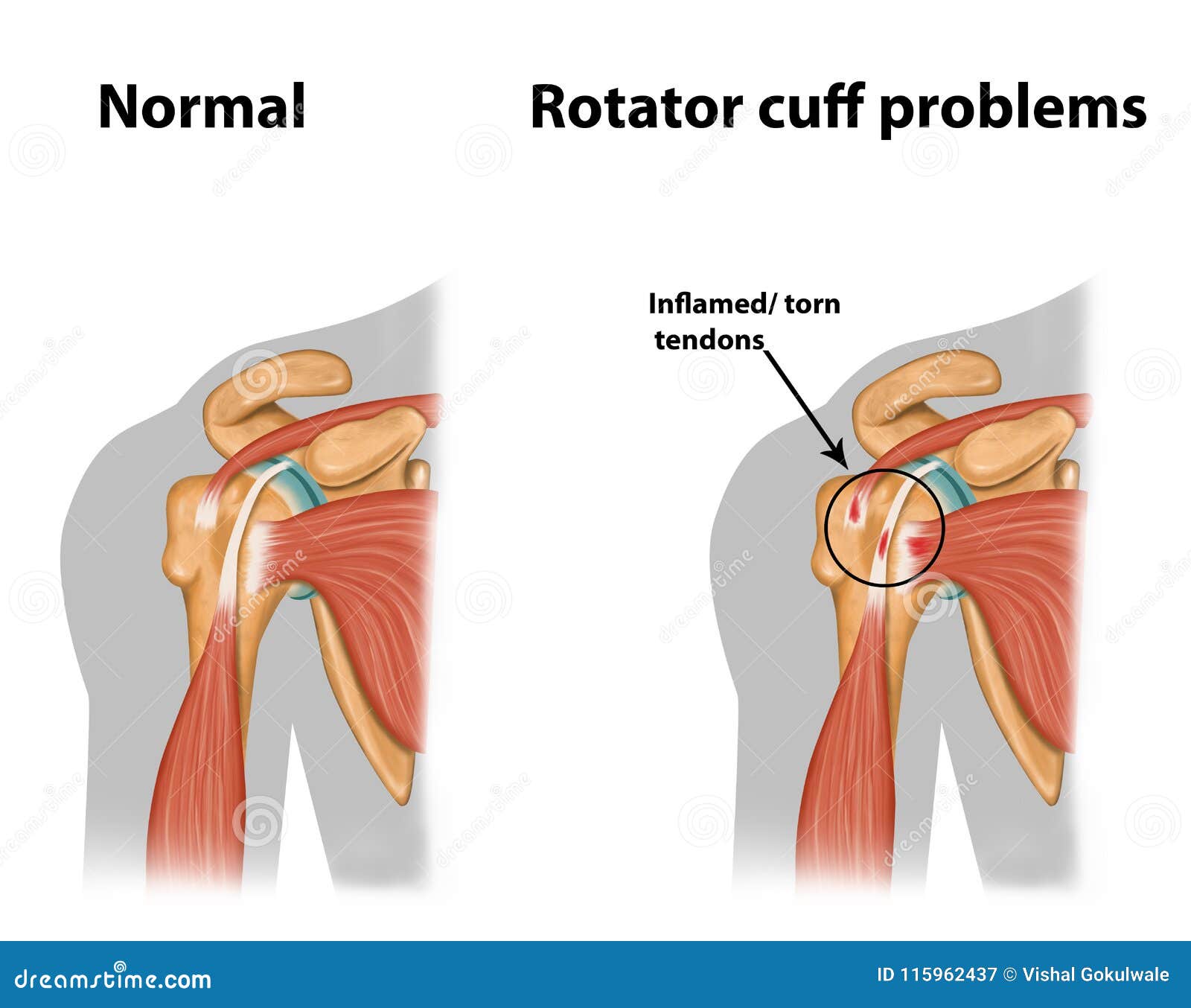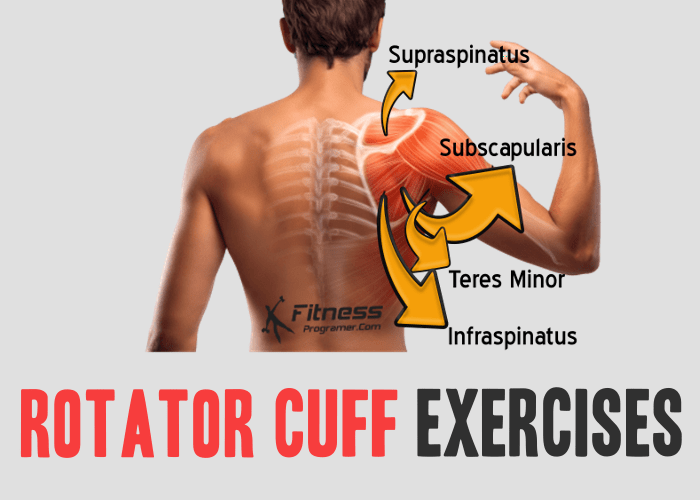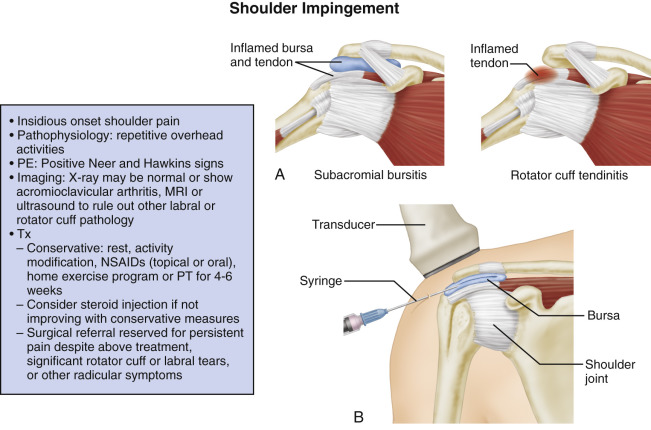How do you know if your rotator cuff is bad. How to Know if Your Rotator Cuff is Injured: Symptoms and Causes Explained
How do you know if your rotator cuff is bad? Discover the symptoms and causes of rotator cuff injury. Learn how to identify if you have a rotator cuff tear or tendonitis.
Identifying Rotator Cuff Injuries: Symptoms to Watch For
The primary symptom of a rotator cuff injury is shoulder weakness. If you struggle to lift your arm above your head, it’s likely an indication of a problem with your rotator cuff. Shoulder weakness is the common thread across a range of rotator cuff issues, from impingement and tendonitis to partial or full-thickness tears.
You may not always notice the weakness yourself, especially if you can still raise your arm. But other signs to look out for include pain, popping or clicking sensations when moving your arm, and noticeable weakness when trying to lift something you normally have no trouble with.
Understanding Rotator Cuff Anatomy and Injuries
The rotator cuff is a complex set of four muscles and their tendons that work together to stabilize the shoulder joint and allow for arm lifting and rotation. Rotator cuff injuries can affect one or more of these muscles and tendons, leading to the same symptoms of shoulder weakness.

Rotator cuff tendonitis is a common injury caused by irritation and inflammation of the tendons over time, often from repetitive overhead motions or sleeping on the same side. This can narrow the space around the rotator cuff, causing the tendons to rub against other shoulder structures and become further aggravated.
Rotator Cuff Tears: Partial vs. Full-Thickness
Rotator cuff tears occur when the tendons start to fray or completely disconnect from the bone. Partial tears involve some damage to the tendon, while full-thickness or complete tears mean the tendon is completely separated.
Traumatic tears from a fall or injury are more common in younger adults, while the majority of rotator cuff tears are degenerative in nature. As we age, the normal wear and tear on the rotator cuff muscles and tendons increases the risk of developing a tear, often without even realizing it.
Diagnosing the Severity of Rotator Cuff Injuries
Sports medicine physicians use a variety of tests to first identify a rotator cuff injury and then determine the severity. This includes assessing the location and degree of shoulder weakness, as well as any pain, popping, or clicking sensations.

The spectrum of rotator cuff injuries ranges from mild tendonitis to full-thickness tears. Identifying the precise nature and extent of the damage is key to developing an appropriate treatment plan.
Preventing and Treating Rotator Cuff Issues
Addressing rotator cuff problems early, before they progress to more serious tears, is important. This may involve physical therapy, anti-inflammatory medications, and changes to activity levels and sleeping positions.
For more severe rotator cuff tears, surgical repair may be necessary to reattach the tendon to the bone. A sports medicine specialist can help determine the best course of action based on the individual’s symptoms and the severity of the injury.
Seeking Expert Care for Shoulder Pain
Shoulder weakness and pain are not normal and should be evaluated by a qualified sports medicine physician. Only a specialist can accurately diagnose the underlying cause and develop an effective treatment plan to restore strength and mobility.
Don’t wait for your shoulder issues to worsen. Schedule an appointment with a sports medicine expert to get to the root of the problem and start on the path to recovery.

Optimizing Shoulder Health and Function
Maintaining the health and strength of the rotator cuff muscles and tendons is crucial for preserving shoulder mobility and function. This may involve regular exercises to keep the rotator cuff muscles strong, as well as adjusting daily activities and sleeping positions to avoid repetitive strain.
By understanding the anatomy and common injuries of the rotator cuff, individuals can be proactive in recognizing the early signs of trouble and seeking prompt medical attention. With the right diagnosis and treatment, many rotator cuff issues can be effectively managed or even prevented.
How to Tell When You’ve Torn or Injured Your Rotator Cuff
There’s a fine line between normal wear and tear and an actual tear of your rotator cuff.
Posted
by Featured Provider Christopher Kim on Friday, March 26, 2021
Raise your hand if you’ve experienced shoulder pain.
If your hand isn’t stretched high above your head, there’s a decent chance you have a damaged rotator cuff.
Shoulder weakness is the No. 1 sign of a rotator cuff injury, says Christopher Kim, MD, an orthopaedic surgeon who specializes in sports medicine. So if you struggle to lift your arm above your head, it’s likely that there’s something wrong in this part of the shoulder.
Shoulder weakness is the common symptom across a range of rotator cuff injuries.

Like the shoulder itself, the rotator cuff is a complex set of working parts that allow you to lift and rotate your arms (hence the name). The rotator cuff is made up of four different muscles (the supraspinatus, infraspinatus, subscapularis and teres minor) and the tendons that attach them to the bone to help stabilize your shoulder joint. So you can have a problem with one or many of the muscles and suffer from the same weakness.
“People come in with similar kinds of pain and often complain of the same thing,” Dr. Kim says. “We sort out where the weakness is really coming from to figure out which part of the rotator cuff it is, and how bad it is.”
You may not easily notice the weakness yourself if, say, you can still raise up your arm. But you might feel a pain, pop or click when you move your arm a certain way or sleep on it in bed. Other times, you don’t notice it until one shoulder gives out or is noticeably weaker when you try to lift something you normally have no problems with.
Uniquely Trained to Identify Your Shoulder Issues
Only a sports medicine physician can pinpoint your shoulder problem. Meet with Dr. Kim to improve your strength and overcome your injury.
Make an Appointment
Sports medicine physicians like Dr. Kim run you through a battery of tests to first identify that it’s a rotator cuff injury and not something wrong with cervical vertebra, neck, biceps or AC joint. Then they sort out the severity of the damage.
“There’s a very broad spectrum. On one end, you have impingement, bursitis and rotator cuff tendonitis. On the other end of the spectrum, there’s a full thickness rotator cuff tear. And then you have a whole bunch in between and partial tears that range from low-grade or high-grade.”
Rotator Cuff Tendonitis
The tendons of your rotator cuff can become irritated and inflamed, leading to tendonitis. It’s something that usually occurs over time, whether from sleeping on the same side of your body every night or performing repetitive motions that require you to raise your arm above your head.
“This is what some refer to as impingement or bursitis,” Dr. Kim says. “We have a bursa, which is a little fluid-filled sac around the rotator cuff that allows things to glide over each other. Inflammation can cause it to swell with more fluid, which leads to pain.”
And as you move, the space around your rotator cuff narrows. The tendons rub against other parts of the shoulder, causing more irritation and pain.
Rotator Cuff Tears
The tendons that attach the rotator cuff can also start to fray or lose their connection to the bone.
“We characterize rotator cuff tears in lots of different ways. We can define it as more the wear-and-tear, degenerative tear that happens as we get older, which is common. There are also the traumatic tears, where you have a fall or an injury. Either of these can be partial or full,” Dr. Kim says.
Partial rotator cuff tears are when there is damage, but some of the tendon is still connected. Full-thickness, or complete rotator cuff tears, are completely disconnected and look like there is a hole where the muscle should attach to the bone.
Full-thickness, or complete rotator cuff tears, are completely disconnected and look like there is a hole where the muscle should attach to the bone.
Age and repetition both wear on your rotator cuff muscles and tendons.
Traumatic tears are more common in young adults, as the result of a fall. But the majority of rotator cuff tears are of the degenerative type — the normal wear and tear your body faces over time. You’re more likely to suffer a rotator cuff tear after the age of 40. People in their 60s, 70s and 80s have a good chance of tearing a rotator cuff without even knowing it, Dr. Kim says.
With age, comes the repetition that causes these degenerative tears. By the time you’re 40, you’ve simply moved your shoulder a lot more times than through age 20. But there are other risk factors for developing a degenerative tear or even rotator cuff tendonitis.
“The non-traumatic type of tear typically happens in people who had a lot of repetitive motions with their shoulders. And that repetitive motion could be lifting heavy objects or performing manual labor where you’re constantly lifting and pulling,” Dr. Kim says. “It can actually even be repetitive desk work, like using a mouse or keyboard all day. People complain about shoulder pain with that, too.”
And that repetitive motion could be lifting heavy objects or performing manual labor where you’re constantly lifting and pulling,” Dr. Kim says. “It can actually even be repetitive desk work, like using a mouse or keyboard all day. People complain about shoulder pain with that, too.”
There are also biological, internal risk factors, he says. A history of shoulder trauma or surgery puts you at risk of a tear. So does smoking. Smokers tend to have more rotator cuff problems and more pain.
Rotator cuff pain is easy to overcome with stretches and exercises.
There’s no specific shoulder stretch, exercise or routine for you to prevent a rotator cuff injury. But that’s typically the prescription for rotator cuff problems, even up to partial tears.
“Rotator cuff treatment is so variable. Not all rotator cuff injuries are treated the same. One full-thickness tear is different from another. Partial tears are different from full tears,” Dr. Kim says. “There are a lot of factors involved, but almost always our recommendations are non-surgical. You undergo therapy with a physical therapist or do your own home exercises. And then we discuss whether a steroid injection is beneficial or not in managing your pain.”
Kim says. “There are a lot of factors involved, but almost always our recommendations are non-surgical. You undergo therapy with a physical therapist or do your own home exercises. And then we discuss whether a steroid injection is beneficial or not in managing your pain.”
When these more conservative treatments aren’t effective, or you suffered a complete tear, rotator cuff repair surgery is needed.
“The majority of rotator cuff surgeries are all arthroscopic. It’s a less invasive surgery but recovery from a rotator cuff repair is actually quite long. It takes much longer for soft tissue to heal back onto bone,” Dr. Kim says.
“You’re typically in a sling for about six weeks. During that time, you come out of the sling two or three times a week for physical therapy. It’s usually three months before you start any strengthening exercises — light bands and things like that. And you typically go to therapy for five to six months before continuing to improve on your own at home. It’s usually about nine to 12 months total before it’s the best you’re rotator cuff is going to get.”
It’s usually about nine to 12 months total before it’s the best you’re rotator cuff is going to get.”
Nobody wants to hear that their shoulder weakness is going to take a year of treatment and effort to heal. That’s why it’s so important to get evaluated early, Dr. Kim says.
“The longer you have symptoms, the harder it often is to treat. And the injury has progressed,” he says, “Treating a rotator cuff problem when it’s at the early stages of bursitis or tendonitis is best. People respond pretty well with non-surgical, conservative measures like injections and physical therapy.”
So as soon as you feel a twinge of shoulder pain or weakness, schedule a shoulder evaluation or visit the Bone & Joint Center to start a much shorter road to recovery.
Are You Suffering With These Symptoms of a Rotator Cuff Tear?: Dr. Matthew Pifer: Orthopedic Shoulder Surgeon
Rotator cuff tears are painful shoulder injuries that occur when there’s damage to the rotator cuff — a collection of muscles and tendons that contribute to shoulder mobility and stability. While there are numerous techniques to treat a small rotator cuff tear, a significant tear usually requires surgery for a full recovery.
While there are numerous techniques to treat a small rotator cuff tear, a significant tear usually requires surgery for a full recovery.
Board-certified orthopedic surgeon Matthew Pifer, MD specializes in minimally invasive shoulder surgery and has extensive experience performing rotator cuff repairs.
Most rotator cuff tears are the result of a single incident, like a sports injury. Occasionally, a bone spur in the shoulder might cause a tear. Hobbies or sports that involve repeat shoulder movements, such as baseball, tennis, and construction work, raise the risk of rotator cuff injuries.
Telltale signs of a rotator cuff tear
Shoulder pain is one of the main signs of a rotator cuff tear, but there are other signs that make it more likely. Where in the shoulder the pain occurs and how your shoulder moves provide helpful clues to the source of your shoulder issues.
In rotator cuff injuries, the pain is felt at the front of the shoulder. Because the rotator cuff enables shoulder mobility and provides stability, problems in these areas suggest a rotator cuff tear. Patients with rotator cuff tears have trouble raising their arms and reaching behind them. When you try to make these movements, your pain may worsen.
Patients with rotator cuff tears have trouble raising their arms and reaching behind them. When you try to make these movements, your pain may worsen.
Because the shoulder is unstable, patients often notice a popping or clicking sound in the shoulder when moving the arm. This happens when the rotator cuff is unable to keep the upper arm bone in the shoulder socket.
Some individuals report pain all the way to their elbow because nerves from the rotator cuff flow down the arm. Here are the main signs that suggest you have a rotator cuff tear.
Movement restriction
It will be difficult to move your arm and shoulder normally if the rotator cuff is torn. Simple tasks like brushing your hair, dressing, and cooking will be excruciatingly painful. You may find it challenging to carry even small objects due to the lack of range of motion. Reaching overhead is particularly problematic when the rotator cuff is torn.
Shoulder stiffness
If your rotator cuff is injured, your shoulder will become painful and stiff. Your arm will become much more rigid if you stop moving it. You may feel like your shoulder is frozen at times.
Your arm will become much more rigid if you stop moving it. You may feel like your shoulder is frozen at times.
Shoulder weakness
Your shoulder can’t hold as much weight as it usually can when your rotator cuff is damaged. Even something as small as a book may feel too heavy and your arm may become fatigued quickly.
Repairing a rotator cuff
Dr. Pifer has experience repairing partial and full rotator cuff tears. The following are common approaches.
Partial rotator cuff tear repair
When the rotator cuff tendon is ripped but hasn’t completely separated from the underlying bone, a partial repair can restore mobility and relieve pain. Surgery typically involves removing a portion of the acromion bone, which is situated on the shoulder blade.
The ragged ends of the torn tendon are smoothed, and the inflamed bursa sac is removed. Damaged ligaments are removed in the process.
Full rotator cuff tear repair
If the tendon has entirely torn or is completely separated from the upper arm bone, a comprehensive rotator cuff repair procedure is required. Depending on the degree of the damage, there are a few different procedures to complete a full rotator cuff repair.
Depending on the degree of the damage, there are a few different procedures to complete a full rotator cuff repair.
Dr. Pifer specializes in minimally invasive arthroscopic shoulder surgery. With arthroscopic surgery, small incisions are created in the shoulder’s side and back, and Dr. Pifer removes any damage, such as bone spurs. He then reconnects the tendon to the humerus using suture anchors.
Only in cases of severe joint deterioration or serious injury is open surgery performed. Bone, cartilage, and tendons that have been injured are replaced using bone and tissue grafts from other parts of the body. The humerus bone’s head is then used to reconnect the tendon.
Dr. Pifer may use mini open surgery, which involves making a wider incision than is necessary for arthroscopic surgery but doesn’t involve opening the entire shoulder joint or using grafts.
Rotator cuff tears are serious business. Not only is a rotator cuff tear unlikely to get better on its own, but left untreated, it can progress into a chronic issue that causes more problems down the line.
Trust an experienced shoulder surgeon to provide exceptional shoulder care when you need it most. Give us a call to schedule a visit with Dr. Pifer at our Santa Barbara, California office. A team member can assist you in scheduling an in-person or telemedicine appointment with Dr. Pifer.
How Sports Medicine Can Help You Prevent Injuries and Stay in the Game
Pushing your limits on the field shouldn’t mean risking your well-being. Teaming up with a sports medicine professional can be a game-changer. Uncover how this partnership helps you stay healthy and in the game.
Are You Experiencing These Telltale Signs of a Rotator Cuff Tear?
Shoulder pain can be a warning sign of a common but potentially serious injury: a rotator cuff tear. Don’t let this condition go unnoticed; learn the telltale signs and take action to protect your shoulder health./shoulder_pain_medreview-01-5c3b9f8546e0fb0001bdeaaa.png)
Here’s When Arthroscopy Is the Right Course of Action
Your age and other factors play a role in whether arthroscopy is the right treatment option for your joint injury. It’s wise to meet with a specialist for a thorough evaluation and to discuss your options.
Is PRP Right for Me?
For anyone looking to speed up their recovery, platelet-rich plasma (PRP) therapy is a game-changing option. Find out how this cutting-edge treatment can help you get back to your daily activities pain-free.
How to Tell If You Have Shoulder Instability
Shoulder instability is not only painful but risky if left untreated. Having a specialist examine your shoulder is the first step to diagnosing shoulder instability. Once diagnosed, treatment eases pain and restores function.
Why You Should Consider Sports Medicine If You’re Not an Athlete
Sports medicine offers a range of benefits, and you don’t have to be an athlete to reap them. Patients with a range of issues can take advantage of sports medicine programs for preventing and treating injuries.
Treatment of impingement syndrome (rotator cuff injury) in Yaroslavl
Description
The main complaint in this disease is diffuse dull pain in the shoulder, aggravated by raising the arm up. Many note that it interferes with sleep, especially if you lie on the side of the affected shoulder joint.
A characteristic symptom is the occurrence of acute pain when trying to reach the back pocket of the trousers. Later stages are characterized by increased pain, stiffness of the joint. Sometimes when lowering the arms, a clicking in the joint is possible.
Difficulty or impossibility of raising the arm up, weakness are possible with a rupture of the tendons of the rotator cuff – a tendon formation from the tendons of the infraspinatus, supraspinatus and subscapularis muscles. The main function of the tendon formation is the stabilization of the head of the shoulder during the abduction of the upper limb in the glenoid cavity of the scapula and its retention.
The main function of the tendon formation is the stabilization of the head of the shoulder during the abduction of the upper limb in the glenoid cavity of the scapula and its retention.
The most frequent patients with impingement syndrome are middle-aged and older people . Due to post-traumatic or age-related changes, the acromial process of the scapula becomes sharpened, osteophyte spikes form on it, which leads to abrasion of the rotator cuff – which is impingement syndrome.
Treatment
If the rotator cuff is intact, conservative treatment can be started
It is necessary to limit the patient’s activity, anti-inflammatory therapy, physiotherapy, local administration of steroid drugs, it is desirable to wear a scarf. Therapeutic treatment takes from several weeks to several months, and the listed methods are usually sufficient if the disease is not advanced.
If the therapeutic treatment of impingement syndrome does not give results, then surgical treatment is performed.
It is also indicated for acute pain or damage to the dominant hand, when the quality of life of the patient decreases. Surgical treatment consists in arthroscopic subacromial decompression: through skin punctures with a special instrument, bone spikes from the acromial process of the scapula, compressing the rotator cuff and causing pain, are removed under the control of an arthroscope, while the joint is simultaneously washed with a large amount of isotonic solution.
In case of damage to the rotator cuff, surgical treatment is indicated in almost 100% of cases. The operation is performed arthroscopically through punctures or through a small incision. The choice of operation method depends on the location of the gap and its size. If the gap is partial, then during the operation only smoothing of the edges of the damage is required. Complete ruptures involving the entire thickness of the ligamentous apparatus require suturing, and ruptures at the site of attachment of the tendon to the bone require the tendon to be “sutured” to the bone with absorbable anchors.
Complete ruptures involving the entire thickness of the ligamentous apparatus require suturing, and ruptures at the site of attachment of the tendon to the bone require the tendon to be “sutured” to the bone with absorbable anchors.
If you have any questions or sign up for a consultation with a specialist, please call:
(4852) 37-00-85
Daily from 8:00 to 20:00
Book a consultation
Sign up
Online consultation
Arthroscopic suture of the rotator cuff in St. Petersburg
Arthroscopic suture of the rotator cuff in St. Petersburg 8 812 380 02 38 St. Petersburg
Make an appointment
Arthroscopic rotator cuff suture of the 1st category of complexity (including examination by an anesthesiologist, anesthesiology manual, cuff fixator kit and daily postoperative monitoring)
128,900 ₽
Arthroscopic suture of the rotator cuff of the 3rd category of complexity (including an examination by an anesthesiologist, anesthetic manual, 2 sets of cuff fixator and daily postoperative monitoring)
193 500 ₽
9006 2
Arthroscopic rotator cuff suture grade 2 (including examination anesthesiologist, anesthetic manual, 2 sets of cuff fixator and 24-hour postoperative follow-up)
171 000 ₽
Digital X-ray and modern dressings
A wide range of high-tech surgical methods
Rehabilitation after injuries and operations
Why the service is needed
Our advantages
Indications
Contraindications
How the service is performed
9 0004
How to prepare for the visit
What happens after the service
therefore, on the day of discharge, driving must be abandoned.
